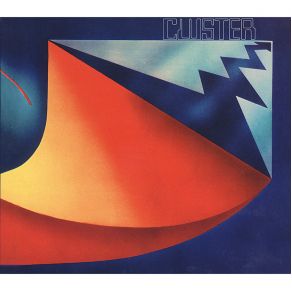Cluster 71
Download links and information about Cluster 71 by Cluster. This album was released in 1971 and it belongs to Ambient, Electronica, Rock, Dancefloor, Pop, Pop Rock, Dance Pop, Classical genres. It contains 3 tracks with total duration of 44:32 minutes.

|
|
|---|---|
| Artist: | Cluster |
| Release date: | 1971 |
| Genre: | Ambient, Electronica, Rock, Dancefloor, Pop, Pop Rock, Dance Pop, Classical |
| Tracks: | 3 |
| Duration: | 44:32 |
| Buy it NOW at: | |
| Buy on iTunes $9.99 | |
| Buy on Amazon $8.99 | |
| Buy on Songswave €1.25 | |
| Buy on iTunes $9.99 | |
| Buy on Songswave €1.25 | |
Tracks
[Edit]| No. | Title | Length |
|---|---|---|
| 1. | 7:42 | 7:43 |
| 2. | 15:43 | 15:36 |
| 3. | 21:32 | 21:13 |
Details
[Edit]Cluster 71 is Cluster's debut album — after Conrad Schnitzler left the trio known as Kluster to go solo — and it's a strange and mercurial wonder. Issued by Philips, it is a Krautrock record with no rock. There is precious little to hold onto here. Using a pair of organs with a boatload of effects pedals, audio-generators (the kind used by electricians), an electronically treated cello, a Hawaiian guitar, and some other sundry items, Dieter Moebius and Hans-Joachim Roedelius (along with producer Conny Planck, who functioned, in essence, as a third member) created a dislocating, disorienting meld of random space music, industrial noise, proto-ambient atmospherics, feedback, and soundwash that walked some crooked line between musique concrete, improvisation, and raw unmusical terrorism. There is no regular beat, though there is, at times, a very pronounced rhythm. The terrifying ending in the final third of "15:33" is one of many examples; so too, with the quiet yet creepy commencement of "7:38," with its hushed approximation of a heartbeat that escalates into a wall of clash and clang rather quickly, with the pulse of an organ emanating deliriously from the background before it slows to the point of silence — not fadeout, but collapse. The final work here, "21:17," also oozes an irregular rhythmic pulse at the beginning, courtesy of a lone guitar chord played with a wah wah pedal and looped on a tape recorder. But it is displaced by random whirrs and whizzes from the generators in tandem. So many of the sounds here cannot be readily identified, and that lends this recording its sense of timelessness. Of all the pieces here, this last one, with its varying dynamics and textures — all of them rather sparse but multi-dimensional nonetheless — is at once utterly magical and nearly completely forbidding. Cluster 71 is a masterwork, not because it set out to be, but in spite of itself. It's one of those moments in music history where all bets were off and everyone involved — except perhaps the record label — found it liberating.